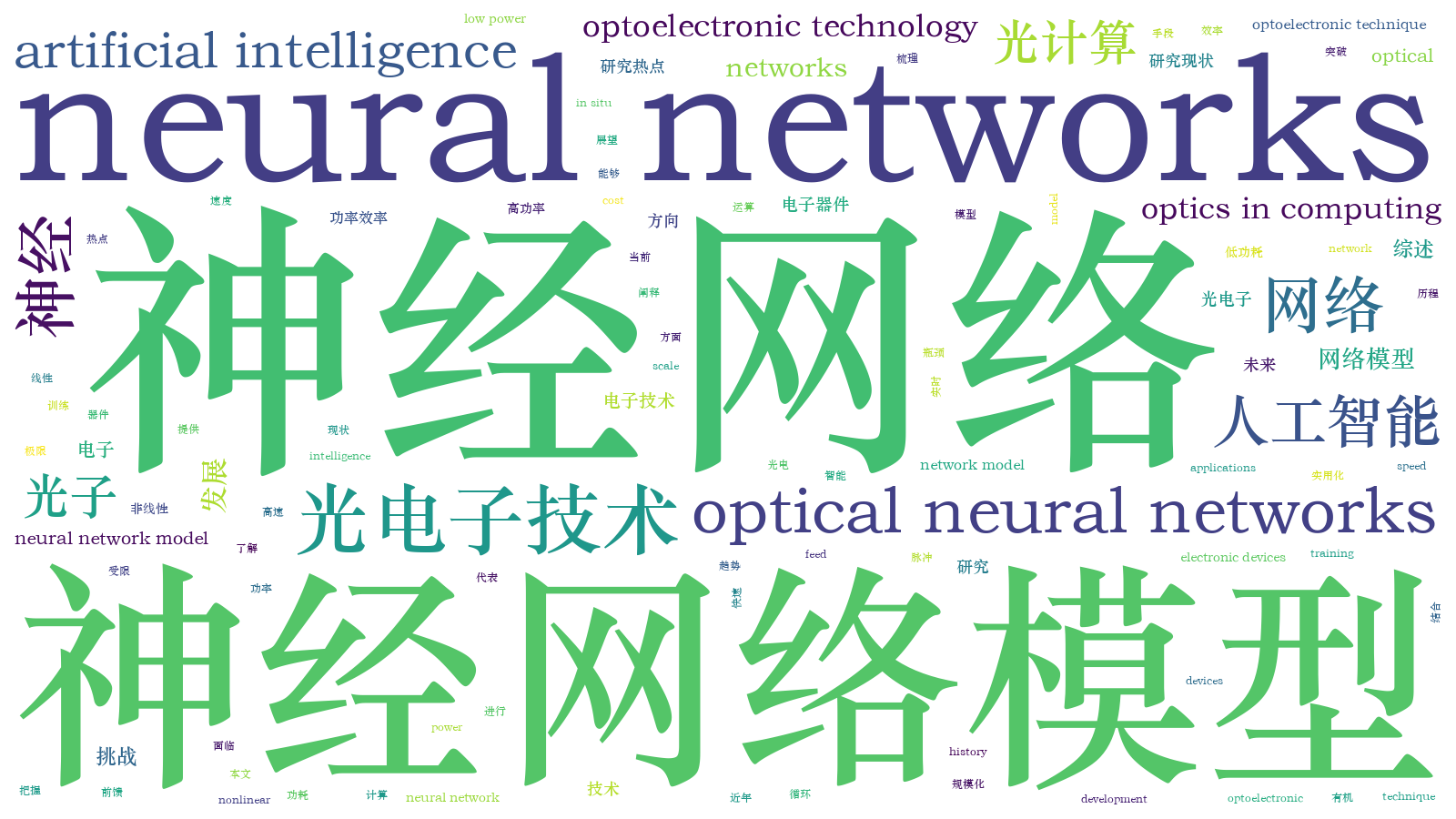中国激光, 2020, 47 (5): 0500004, 网络出版: 2020-05-12
光子神经网络发展与挑战  下载: 4355次特邀综述
下载: 4355次特邀综述
Advances and Challenges of Optical Neural Networks
光计算 神经网络 光电子技术 人工智能 optics in computing neural networks optoelectronic technology artificial intelligence
摘要
近年来,以神经网络为代表的人工智能技术正向着高速低功耗的方向快速发展。然而,受限于电子器件的固有极限,传统电子神经网络难以进一步提高功率效率与计算速度。而光子神经网络能够有机地将光电子技术与神经网络模型相结合,提供了突破这一瓶颈的有效手段。为了更好地了解光子神经网络的发展历程,把握当前光子神经网络的研究热点以及展望未来光子神经网络的发展方向,本文对光子前馈、循环以及脉冲神经网络的研究现状进行梳理,以阐释光子神经网络在实时训练、非线性运算、规模化和实用化方面面临的挑战及未来发展的趋势。
Abstract
Neural networks, as one of the most representative techniques in artificial intelligence, have been in rapid development towards high computational speed and low power cost. Due to intrinsic limitations brought by electronic devices, it can be hard for electronic implemented neural networks to further improve these two performances. Optical neural networks can combine both optoelectronic technique and neural network model to provide ways to break the bottleneck. In order to have a brighter view on the history, frontiers and future of optical neural networks, optical neural networks of feed-forward, recurrent and spiking models are illustrated in this paper. Challenges and future trends of optical neural networks on in situ training, nonlinear computing, expanding scale and applications will thus be revealed.
陈宏伟, 于振明, 张天, 臧裕斌, 淡一航, 徐坤. 光子神经网络发展与挑战[J]. 中国激光, 2020, 47(5): 0500004. Hongwei Chen, Zhenming Yu, Tian Zhang, Yubin Zang, Yihang Dan, Kun Xu. Advances and Challenges of Optical Neural Networks[J]. Chinese Journal of Lasers, 2020, 47(5): 0500004.







